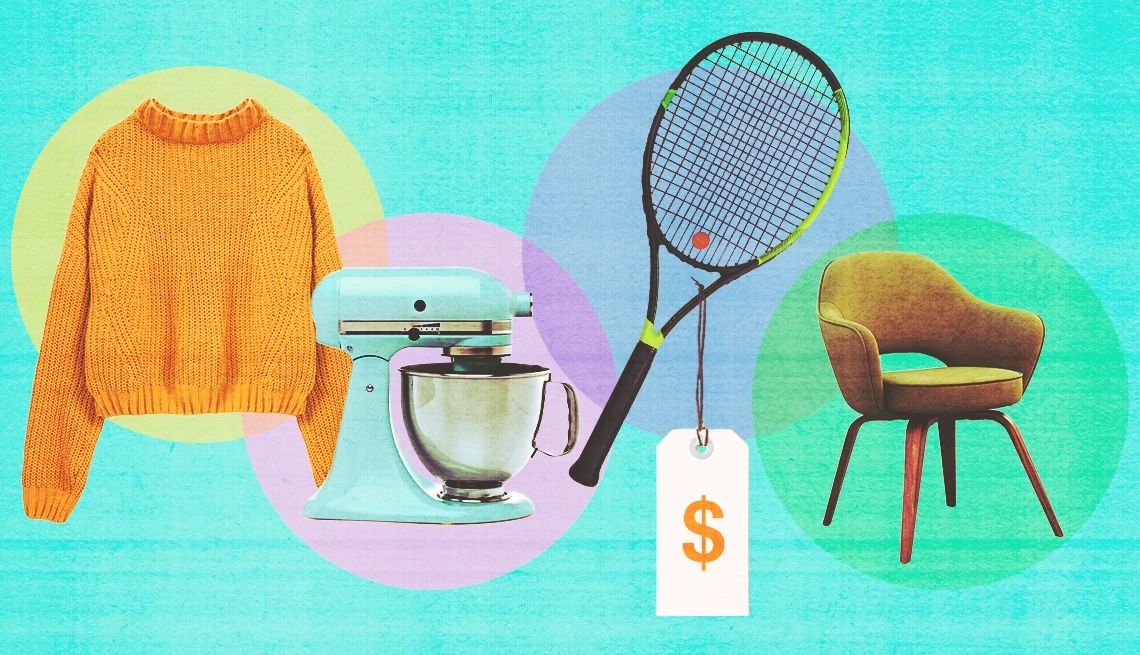AARP Hearing Center


As temperatures increase, so does the urge to throw open the windows and do some old-fashioned spring cleaning. It’s a ritual that 74 percent of Americans engage in every year, according to the American Cleaning Institute. But before writing off all your extra stuff as trash or giveaways, consider making some extra money by selling some of those items.
“I think people would be quite surprised to know how much money they can get for their unwanted things,” says Lynnette Khalfani Cox, personal finance expert and author of Bounce Back: The Ultimate Guide to Financial Resilience. In fact, a recent Bankrate survey found that selling your unwanted items brings in an average of $810.
Ready to cash in on spring cleaning? Here’s how to turn your seasonal organizing session into extra money.
1. Trade out your old tech for new cash.
Planning to join the 84 percent of Americans who will purchase new tech products in the next year, according to the Consumer Technology Association? Instead of throwing out your old TVs, smartphones, tablets, gaming consoles or wireless devices or letting them gather dust in the closet, turn them into cash.
Platforms like Decluttr and GadgetGone specialize in selling used electronics. After entering information about the device, you’ll receive an instant valuation. Next, ship the device and the website will pay you the agreed-upon amount when the device is received and listed for sale. Just be sure to stick with reputable sites. Khalfani Cox suggests checking Better Business Bureau ratings and online reviews before shipping your items.
Other websites, including eBay, Craigslist and Facebook Marketplace, are also popular for selling used electronics. Do some research on similar items on the site to get an idea of the best price before putting anything up for sale.
And, very important: Beware of possible scams, and consider meeting buyers in a police station parking lot or other public place instead of sharing your home address, adds consumer savings expert Andrea Woroch.






























































More From AARP
How to Hygge Your Home
Natural fabrics, comfy chairs and soft lighting will help turn your home into a hygge haven
8 Tips for Decluttering Before a Big Move
Downsizing often means there’s no room for all that stuff9 Closet Hacks to Organize Your Space
Simple steps to declutter and make sense of your clothes and shoes
Recommended for You